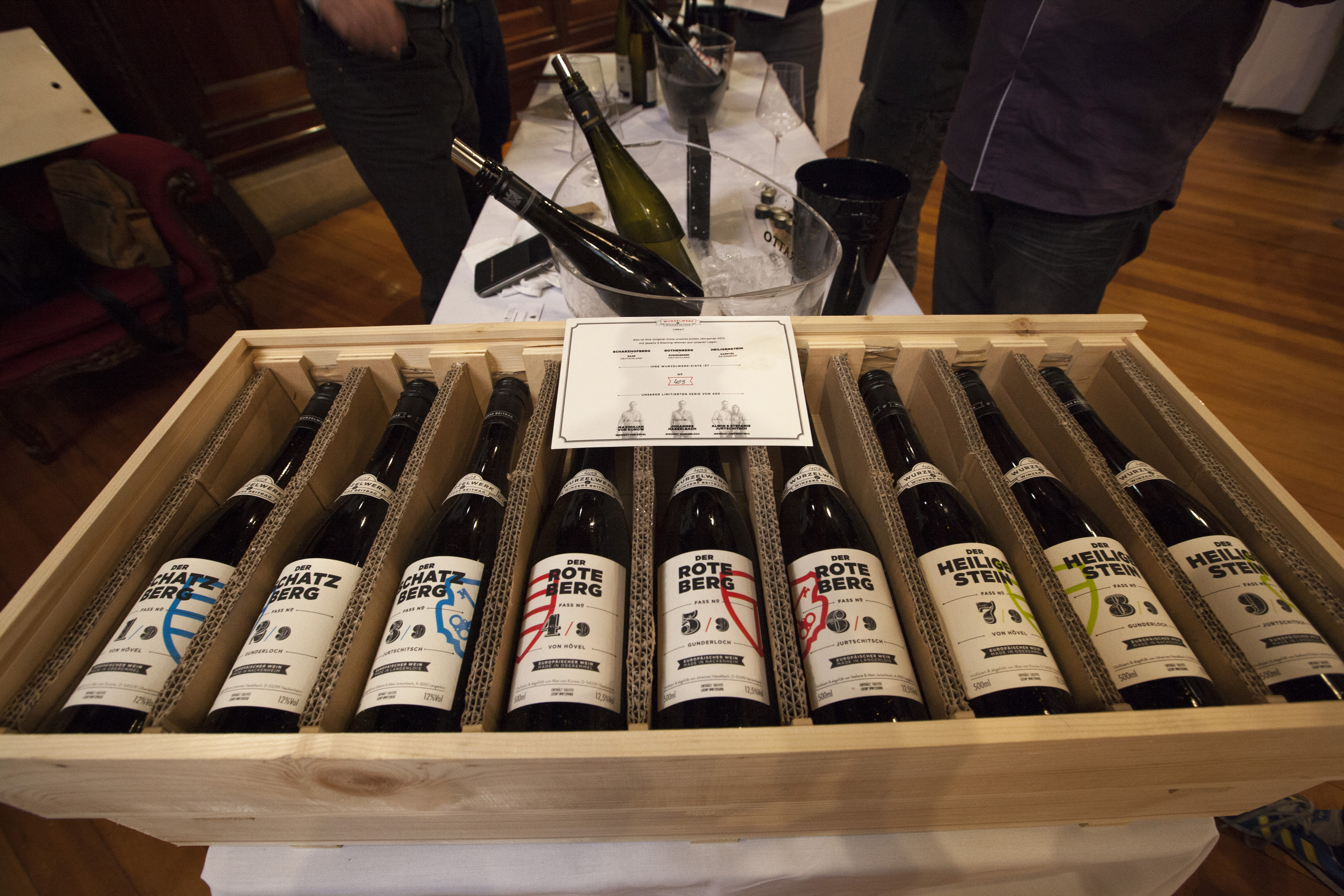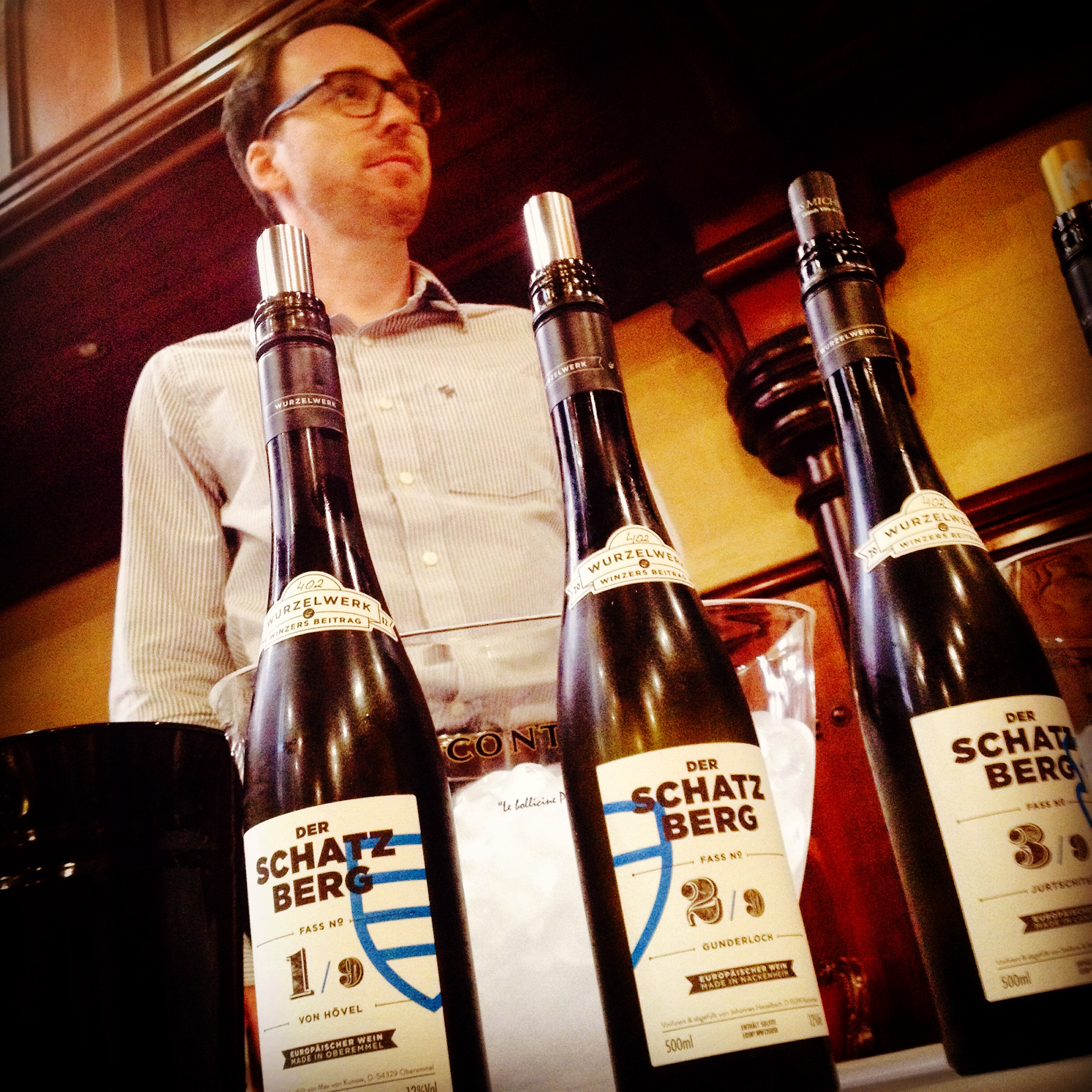
“One of the more fascinating tastings I’ve experienced over the past 12 months was that of the joint Germany-Austria riesling project, Wurzelwerk & Winzers Beitrag. The results are wines which have much in common, but also subtleties which distinguish them from one another. ” Tim White, Financial Review
This is a three-way, border-hopping juice-swap experiment through which the participating producers pick apart their soil, their home and their beloved Riesling grape in an attempt to better understand their vineyards – or as they put it, “to hear the quiet voice of terroir”. Wurzelwerk & Winzers Beitrag is the brainchild Johannes Hasselbach of Gunderloch, Saar producer Maximilian Von Kunow of Weingut Von Hövel, and Alwin and Stefanie Jurtschitsch of Weingut Jurtschitsch in the Kamptal. In 2012 the three of them exchanged a portion of their harvest with the motto, “Give me your juice; I’ll give you mine”. They made one wine each with fruit from a single site on each other’s estate. The vineyards – all effectively grands crus, whose real name couldn’t be used because this boundary-pushing concept breaks local wine laws – were: Scharzhofberg (nicknamed Der Schatz Berg) in the Saar; Rothenberg (Der Rote Berg)in Rheinhessen; and Heiligenstein (Der Heilige Stein)in the Kamptal. The grapes were vinified similarly with minimal intervention (spontaneous fermentation in stainless steel) in three separate cellars, each with a personal interpretation.
These winemakers have travelled far and wide, gaining international experience before coming home to work at their parents’ wineries. They’ve taken the helm and are facing challenges with innovation. At the same time, they’re mindful of old values: culture, customs and the environment. Wurzelwerk isn’t about novelty; it’s about rediscovering a winegrowing philosophy – an exercise in mindfulness, observation and exploration.
The Wines*
*These 2012 Rieslings are available only as a nine-pack of 500ml bottles. RRP $990
Scharzhofberg Vineyard
The steep 28-hectare slope is situated between Wiltingen and Oberemmel. The exposition is south to southeast with parcels on the west border of the site facing southwest. The slope gradient is 30 to 60%. The soil is comprised of weathered slate and clay with high iron content. The fine earth is silty clay with ferrous, reddish content. The vineyard is planted exclusively to Riesling. The Hövel winery owns 2.8 hectares. The wind-exposed valley east of the village of Wiltingen is unique. The forest on the mountaintop regulates humidity and guarantees good aeration of the most elevated parcels. The middle of Scharzhofberg forms a convex that stores warmth. Wines from the Scharzhofberg are restrained in their youth and gain markedly in spice and aroma intensity with bottle maturation. On the palate they are highly elegant and rich in extract. The wines are famed for their capacity to age. This is a legendary vineyard with a world-class reputation.

Rothenberg Vineyard
The Rothenberg site encompasses around 20 hectares and is situated at the north end of the “Roter Hang” between Nackenheim and Nierstein, directly upon Rhine. A rock stratum from the Oberrotliengenden period (around 280 million years ago) came to the surface as a steep slope facing southeast towards the Rhine as the river carved its gorge. The Rothenberg has red plates of shale with thin calcareous veins. The red colour is due to iron content (hematite) that formed during subtropical climate conditions. The slope’s gradient ranges from 30 to 80%. Riesling vines here yield racy, delicate, fruity wines of extraordinary elegance, marked minerality and tremendous ageing potential.
Heiligenstein Vineyard
Situated to the north-east of Langenlois, Zöbinger Heiligenstein is a vineyard of truly mystic intensity which for centuries has been justifiably among the most renowned in Central Europe. The river Kamp curves at its southwest foot, changing direction from north-south to west-east and flowing on into the open Danube Valley. The unique geology of the Heiligenstein, which reaches an altitude of 360m, stems from the Permian era around 270 million years ago. The soils are compressed desert sandstone with abundant quartz and high silicate content. The forest on the plateau brings cool, humid air to Heiligenstein, which is welcome in the warmest and most highly exposed site in the Kamptal region. Between the vine rows thrive flora and fauna that are otherwise found only much further south in Mediterranean regions. Rieslings from the Heiligenstein are exceptionally fine and spicy in their expression.